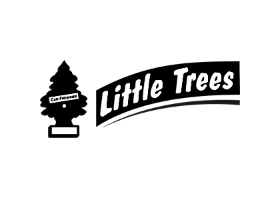English
- استرجاع مجاني وسهل
- أفضل العروض
Skeletons: The Frame Of Life hardcover english - 6/1/2018
قبل:
122.55 د.إ.
الآن:
122.15 د.إ. شامل ضريبة القيمة المضافة
وفرّت:
0.40 د.إ.
 توصيل مجاني
توصيل مجاني باقي 4 وحدات في المخزون
باقي 4 وحدات في المخزون توصيل مجاني
توصيل مجاني باقي 4 وحدات في المخزون
باقي 4 وحدات في المخزون
احصل عليه خلال 27 - 30 نوفمبر

احصل على 5% رصيد مسترجع باستخدام بطاقة بنك المشرق نون الائتمانية. اشترك الآن. قدّم الحين

ادفع على 4 دفعات بدون فوائد بقيمة ٣٠٫٥٤ د.إ.اعرف المزيد

قسمها على 4 دفعات ب ٣٠٫٥٤ د.إ. بدون فوائد أو رسوم تأخير.اعرف المزيد




1
توصيل مجاني لنقطة نون ومراكز الاستلام
معرفة المزيد
إرجاع سهل لكل المنتجات في هذا العرض.

المنتج كما في الوصف
70%
شريك لنون منذ
7+ سنينالمواصفات
| الناشر | Oxford University Press |
| رقم الكتاب المعياري الدولي 13 | 9780198802105 |
| اللغة | الإنجليزية |
| العنوان الفرعي للكتاب | The Frame Of Life |
| وصف الكتاب | Over half a billion years ago life on earth took an incredible step in evolution, when animals learned to build skeletons. Using many different materials, from calcium carbonate and phosphate, and even silica, to make shell and bone, they started creating the support structures that are now critical to most living forms, providing rigidity and strength. Manifesting in a vast variety of forms, they provided the framework for sophisticated networks of life that fashioned the evolution of Earth's oceans, land, and atmosphere. Within a few tens of millions of years, all of the major types of skeleton had appeared. Skeletons enabled an unprecedented array of bodies to evolve, from the tiniest seed shrimp to the gigantic dinosaurs and blue whales. The earliest bacterial colonies constructed large rigid structures - stromatolites - built up by trapping layers of sediment, while the mega-skeleton that is the Great Barrier Reef is big enough to be visible from space. The skeletons of millions of coccolithophores that lived in the shallow seas of the Mesozoic built the white cliffs of Dover. These, and insects, put their scaffolding on the outside, as an exoskeleton, while vertebrates have endoskeletons. Plants use tubes of dead tissue for rigidity and transport of liquids - which in the case of tall trees need to be strong enough to extend 100 m or more from the ground. Others simply stitch together a coating from mineral grains on the seabed. In Skeletons, Jan Zalasiewicz and Mark Williams explore the incredible variety of the skeleton innovations that have enabled life to expand into a wide range of niches and lifestyles on the planet. Discussing the impact of climate change, which puts the formation of some kinds of skeleton at risk, they also consider future skeletons, including the possibility that we might increasingly incorporate metal and plastic elements into our own, as well as the possible materials for skeleton building on other planets. |
| المراجعة التحريرية | In this book, Zalasiewicz and Williams provide an accessible and fun introduction to all kinds of skeletons, from the tiny capsules of microscopic diatoms to the great bones of the dinosaurs, and from lignified vascular plants to coral reefs. A great introduction to the evolution of life and especially to understanding why some organisms are small and some are large. * Michael Benton, University of Bristol * An engaging story... woven together here by tales of discovery and discoverers. * Robert Montgomerie, Times Higher Education * |
| عن المؤلف | Mark Williams is Professor of Palaeobiology at Leicester University, and Dr Jan Zalasiewicz is Senior Lecturer in Palaeobiology, also at Leicester. Jan Zalasiewicz is the author of several books, including The Earth After Us (Oxford University Press, 2008); Rocks VSI (Oxford University Press, 2016); and The Planet in a Pebble (Oxford University Press, 2010), and appears regularly in the media as a commentator on the Anthropocene, extinctions, and other geological topics. Together they have authored two books, Ocean Worlds (Oxford University Press, 2014), and The Goldilocks Planet (Oxford University Press, 2012). |
| تاريخ النشر | 6/1/2018 |
| عدد الصفحات | 320 |
Skeletons: The Frame Of Life hardcover english - 6/1/2018
تمت الإضافة لعربة التسوق
مجموع السلة 122.15 د.إ.
























































































































